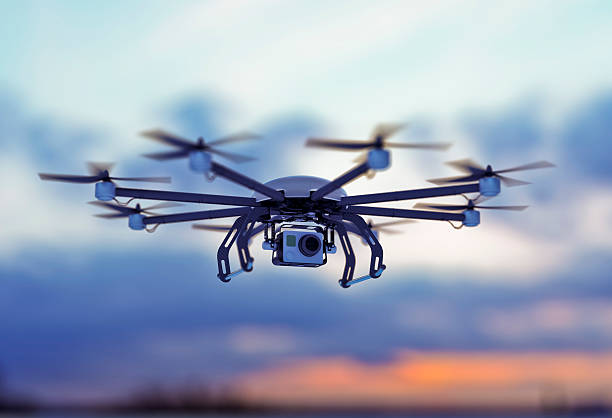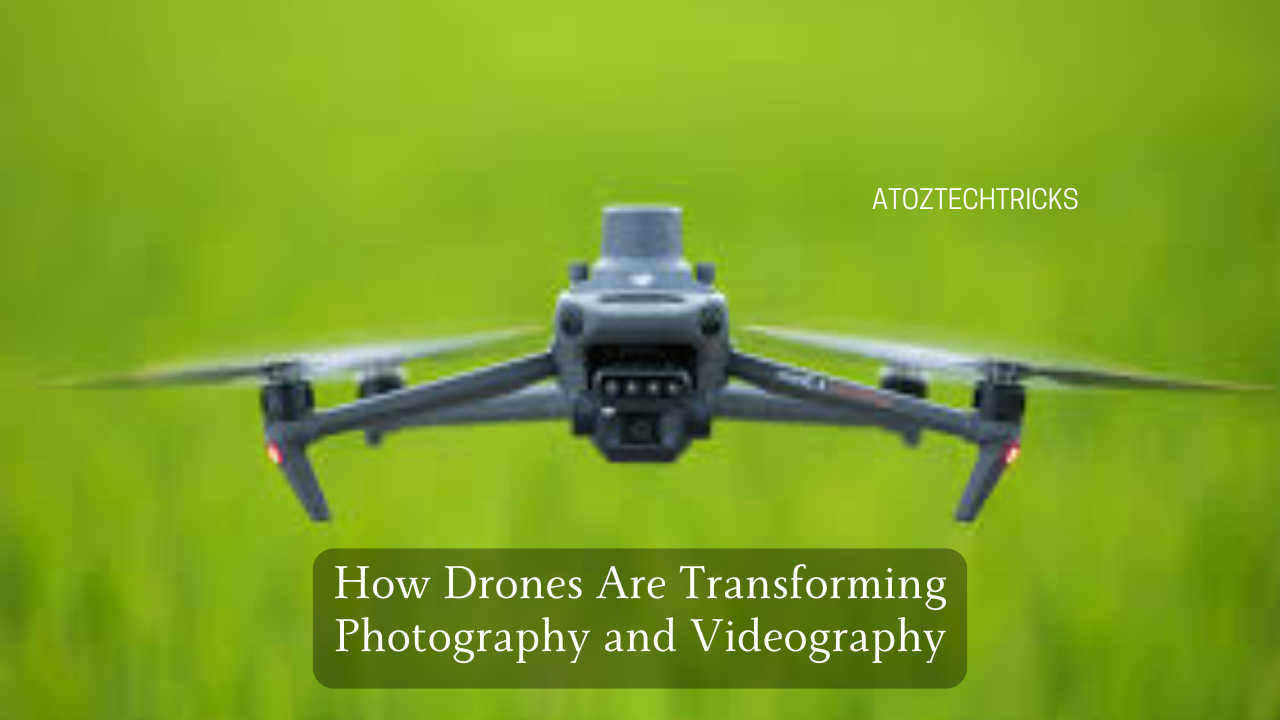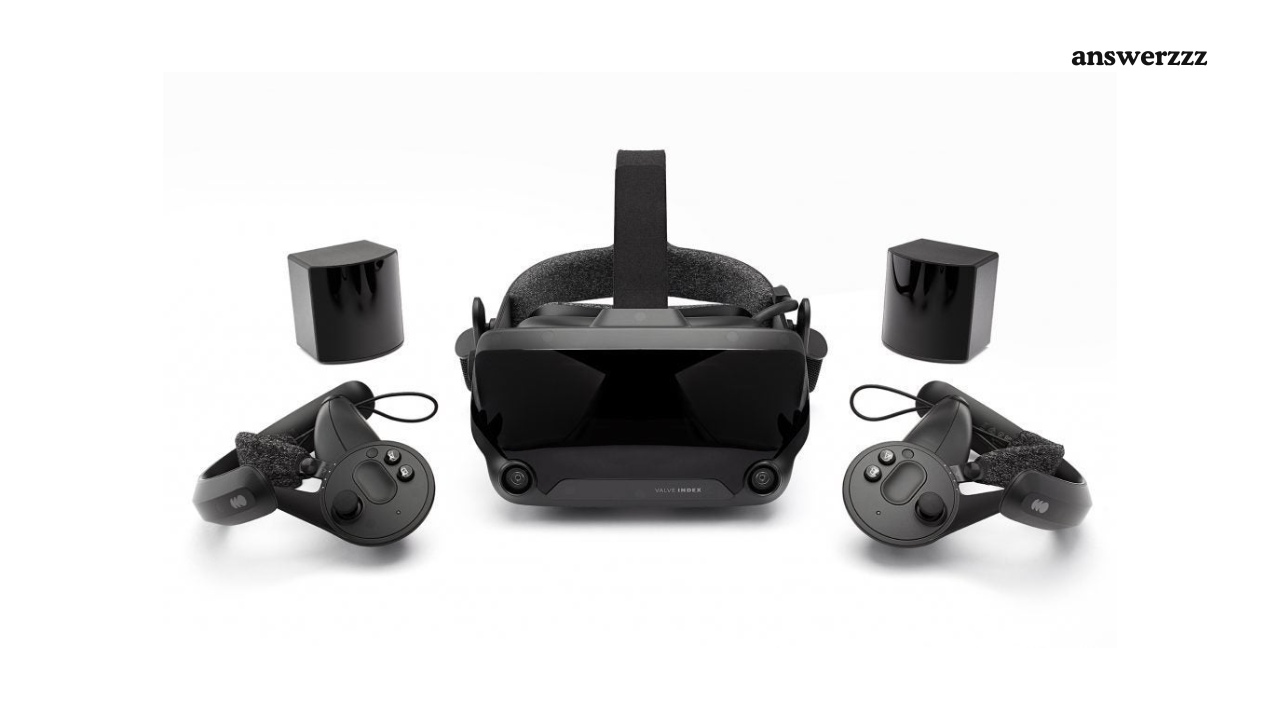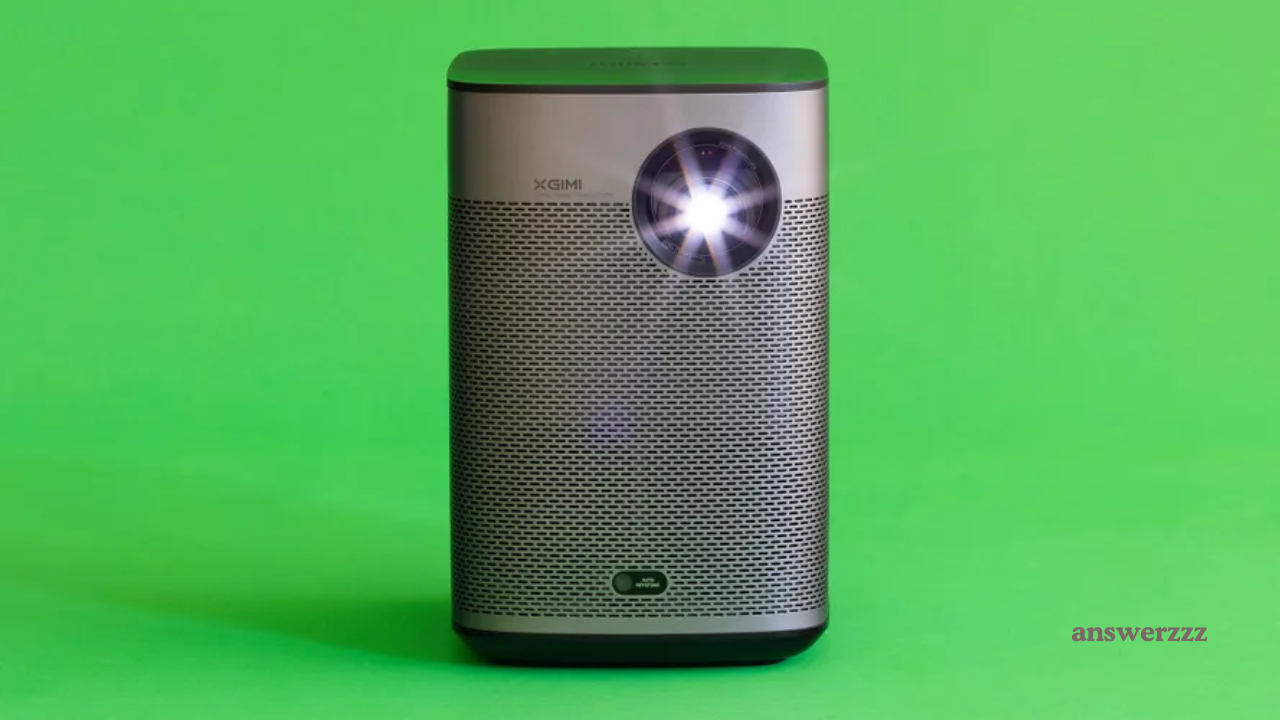In the past decade, drones have emerged as a game-changer in various fields, notably in photography and videography. From hobbyists capturing breathtaking aerial shots to professional filmmakers producing cinematic masterpieces, drones have revolutionized how we perceive and create visual content. This article explores how drones are transforming the photography and videography industry, examining their impact on creativity, technical capabilities, accessibility, and the broader implications for the industry.
The Rise of Drones in Photography and Videography
A Brief History of Drones in Media
Drones, also known as unmanned aerial vehicles (UAVs), were initially developed for military purposes. However, as technology advanced and costs decreased, drones became accessible to the general public. The media and entertainment industry quickly recognized the potential of drones, leading to their widespread adoption in photography and videography. By the early 2010s, drones equipped with high-definition cameras began to appear in various media projects, and today, they are a staple in many photographers’ and filmmakers’ toolkits.
The Democratization of Aerial Photography
Before drones, aerial photography was an expensive and logistically challenging endeavour, often requiring helicopters or planes. Drones have democratized this process, making it accessible to a broader audience. Whether it’s capturing a bird’s-eye view of a wedding venue, documenting the natural beauty of landscapes, or creating dynamic action shots in extreme sports, drones have opened up new creative possibilities for both amateur and professional photographers.
https://answerzzz.com/essential-gadgets-for-the-modern-traveler/
The Technical Advantages of Drones
High-Quality Imaging
Modern drones are equipped with cameras that rival professional-grade equipment. With capabilities such as 4K video recording, high-resolution still photography, and advanced image stabilization, drones can produce stunning visuals that were once only possible with much larger and more expensive setups. Features like HDR (High Dynamic Range) imaging, slow-motion video, and adjustable apertures have further enhanced the quality of drone photography and videography.
Enhanced Maneuverability and Precision
One of the most significant advantages of drones is their ability to manoeuvre in ways that traditional cameras cannot. Drones can fly at varying altitudes, tilt at different angles, and navigate through tight spaces, allowing for shots that would be impossible or dangerous to capture otherwise. This precision enables photographers and videographers to create more dynamic and immersive content, such as tracking shots, smooth pans, and intricate fly-throughs.
Autonomous Flight Modes
Many modern drones come with autonomous flight modes that simplify complex shots. For example, features like “Follow Me,” “Orbit,” and “Waypoint Navigation” allow the drone to track a subject, circle it, or follow a pre-programmed flight path, all without manual control. These modes enable creators to focus more on composition and storytelling rather than piloting the drone, resulting in more polished and professional-looking footage.
Drones and Creativity: Redefining Visual Storytelling
Expanding the Creative Horizon
Drones have expanded the creative possibilities in photography and videography. With the ability to capture perspectives that were previously unattainable, drones have allowed creators to experiment with new angles, compositions, and movements. Aerial shots can convey a sense of scale, isolation, or grandeur, adding emotional depth and context to visual narratives. For example, drone footage of a lone hiker traversing a vast mountain range can evoke feelings of solitude and adventure, while a sweeping shot of a city skyline can emphasize urban density and modernity.
Enhancing Cinematic Techniques
Drones have become an essential tool in cinematic productions, offering a cost-effective alternative to traditional methods like cranes, dollies, and helicopters. Filmmakers can now achieve complex camera movements, such as high-speed chases, sweeping landscape shots, and dramatic reveals, with relative ease. The ability to capture long, uninterrupted takes with smooth transitions between different altitudes and angles has also opened up new possibilities for storytelling, allowing directors to maintain a continuous flow of action and emotion.
Enabling New Genres and Styles
The accessibility and versatility of drones have given rise to new genres and styles of photography and videography. For instance, “drone photography” has become a genre in its own right, characterized by unique compositions and perspectives that emphasize patterns, symmetry, and abstract forms. In videography, drones have popularized the “hyperlapse” technique, where time-lapse footage is captured from a moving drone, creating a dynamic and surreal visual effect. Additionally, drones have facilitated the rise of “drone art,” where coordinated drones create large-scale light displays and performances, blending technology, art, and entertainment.
https://answerzzz.com/the-rise-of-foldable-phones-are-they-worth-it/
The Impact of Drones on Different Industries
Real Estate and Property Development
Drones have revolutionized the real estate industry by providing a new way to showcase properties. Aerial photography and videography allow real estate agents and property developers to highlight the scale, layout, and surrounding environment of properties in ways that traditional photography cannot. Prospective buyers can get a comprehensive view of a property and its surroundings, including features like landscaping, pools, and nearby amenities. This has made drone photography a valuable marketing tool in both residential and commercial real estate.
Travel and Tourism
The travel and tourism industry has also greatly benefited from drone photography and videography. Drones can capture the beauty of destinations from unique angles, creating visually stunning content that attracts tourists. Travel companies, hotels, and tourism boards use drone footage to create promotional videos and social media content that showcase the natural beauty, cultural landmarks, and adventure activities of various destinations. This has led to an increase in demand for drone operators in the travel industry, as businesses seek to differentiate themselves in a competitive market.
Event Coverage
Drones have become a popular choice for covering events, such as weddings, concerts, sports events, and festivals. They offer a way to capture the scale and atmosphere of an event, providing dynamic footage that traditional cameras cannot. For example, drones can capture aerial shots of a wedding ceremony, giving a grand and cinematic perspective of the venue and guests. At concerts and festivals, drones can provide overhead views of the crowd, stage, and performances, creating a more immersive experience for viewers. Additionally, drones are being used in live broadcasts, where they can provide real-time aerial footage, adding a new dimension to event coverage.

Accessibility and Affordability: Making Professional Tools Available to Everyone
The Decline in Costs
One of the key factors driving the widespread adoption of drones in photography and videography is the decline in costs. As technology has advanced, the price of drones has decreased significantly, making them accessible to a wider audience. Entry-level drones with decent camera quality are now available for a few hundred dollars, while high-end models with advanced features can be purchased for a fraction of the cost of traditional aerial equipment. This affordability has lowered the barrier to entry for aspiring photographers and videographers, allowing more people to experiment with drone technology.
User-Friendly Design and Controls
The design and controls of drones have also become more user-friendly, making them accessible to individuals with little to no experience in piloting UAVs. Many drones come with intuitive controls, GPS stabilization, and obstacle avoidance systems that make flying safer and easier. Additionally, drones are often equipped with smartphone apps that provide real-time video feeds, flight telemetry, and advanced camera settings, allowing users to capture high-quality footage with minimal effort. This ease of use has encouraged more people to adopt drones as a tool for creative expression.
Online Communities and Learning Resources
The rise of drones has also led to the growth of online communities and learning resources dedicated to drone photography and videography. Platforms like YouTube, forums, and social media groups provide tutorials, tips, and inspiration for aspiring drone pilots. These communities foster collaboration and knowledge-sharing, helping individuals improve their skills and stay updated on the latest trends and technologies. The availability of these resources has played a significant role in popularizing drones and encouraging more people to explore their creative potential.
https://answerzzz.com/innovative-gadgets-for-remote-work-and-productivity/
Challenges and Considerations in Drone Photography and Videography
Legal and Regulatory Challenges
As drones have become more popular, governments around the world have introduced regulations to ensure their safe and responsible use. These regulations vary by country but often include restrictions on where and how drones can be flown, as well as requirements for registration, licensing, and insurance. For example, in the United States, the Federal Aviation Administration (FAA) requires drone operators to obtain a Remote Pilot Certificate for commercial use and to follow specific guidelines regarding flight altitude, line of sight, and no-fly zones. Navigating these regulations can be challenging for photographers and videographers, particularly when working on international projects.
Privacy and Ethical Concerns
The widespread use of drones has also raised privacy and ethical concerns. Drones can capture images and videos from great distances and angles, sometimes without the knowledge or consent of the individuals being filmed. This has led to debates about the potential for drones to infringe on privacy rights and the need for clear guidelines on their use in public and private spaces. Additionally, ethical considerations arise when drones are used in sensitive areas, such as wildlife habitats or cultural sites, where their presence could cause disruption or harm.
Technical Limitations and Risks
While drones offer many advantages, they also come with technical limitations and risks. Battery life is a significant constraint, with most consumer drones offering only 20 to 30 minutes of flight time per charge. This can limit the ability to capture extended footage or cover large areas in a single flight. Additionally, drones are susceptible to weather conditions, such as wind, rain, and extreme temperatures, which can affect their stability and performance. There is also the risk of technical malfunctions, such as GPS signal loss or motor failure, which could lead to crashes and damage to the drone and its camera.
The Future of Drones in Photography and Videography
Advancements in Drone Technology
The future of drones in photography and videography looks promising, with continued advancements in technology expected to enhance their capabilities. Improvements in battery technology could lead to longer flight times, while advancements in camera sensors and optics could further improve image quality. Additionally, the integration of artificial intelligence (AI) and machine learning could enable drones to perform more complex tasks autonomously, such as identifying and tracking subjects, avoiding obstacles, and optimizing camera settings based on the environment. These developments will likely push the boundaries of what is possible in aerial photography and videography.
https://answerzzz.com/top-smart-home-devices-to-enhance-your-living-space/
The Role of Drones in Emerging Media
As new media formats emerge, drones are expected to play a significant role in shaping their development. For example, drones are already being used in virtual reality (VR) and augmented reality (AR) applications, where they capture immersive 360-degree footage that can be integrated into VR/AR experiences. This opens up new possibilities for storytelling, allowing viewers to explore environments from a first-person perspective or interact with virtual elements overlaid on real-world scenes. Additionally, drones could play a role in live-streaming and interactive media, where real-time aerial footage is combined with user-generated content and social media interactions.
The Integration of Drones in Professional Workflows
As drones become more integrated into professional workflows, we can expect to see them used in a wider range of industries and applications. In addition to traditional fields like real estate, travel, and event coverage, drones are likely to be used in areas such as journalism, environmental monitoring, and disaster response. For example, drones could be used to capture real-time footage of natural disasters or conflict zones, providing valuable information to emergency responders and the public. In environmental conservation, drones could be used to monitor wildlife, track deforestation, and assess the impact of climate change on ecosystems.

The Transformative Power of Drones
Drones have undeniably transformed the fields of photography and videography, offering new creative possibilities, enhancing technical capabilities, and making professional tools accessible to a broader audience. As technology continues to advance, drones will likely play an even more significant role in shaping the future of visual storytelling. However, with these opportunities come challenges, including legal, ethical, and technical considerations that must be addressed to ensure the responsible and sustainable use of drones. As we move forward, it is clear that drones will remain a powerful tool for capturing the world from new and exciting perspectives, pushing the boundaries of what is possible in photography and videography.



